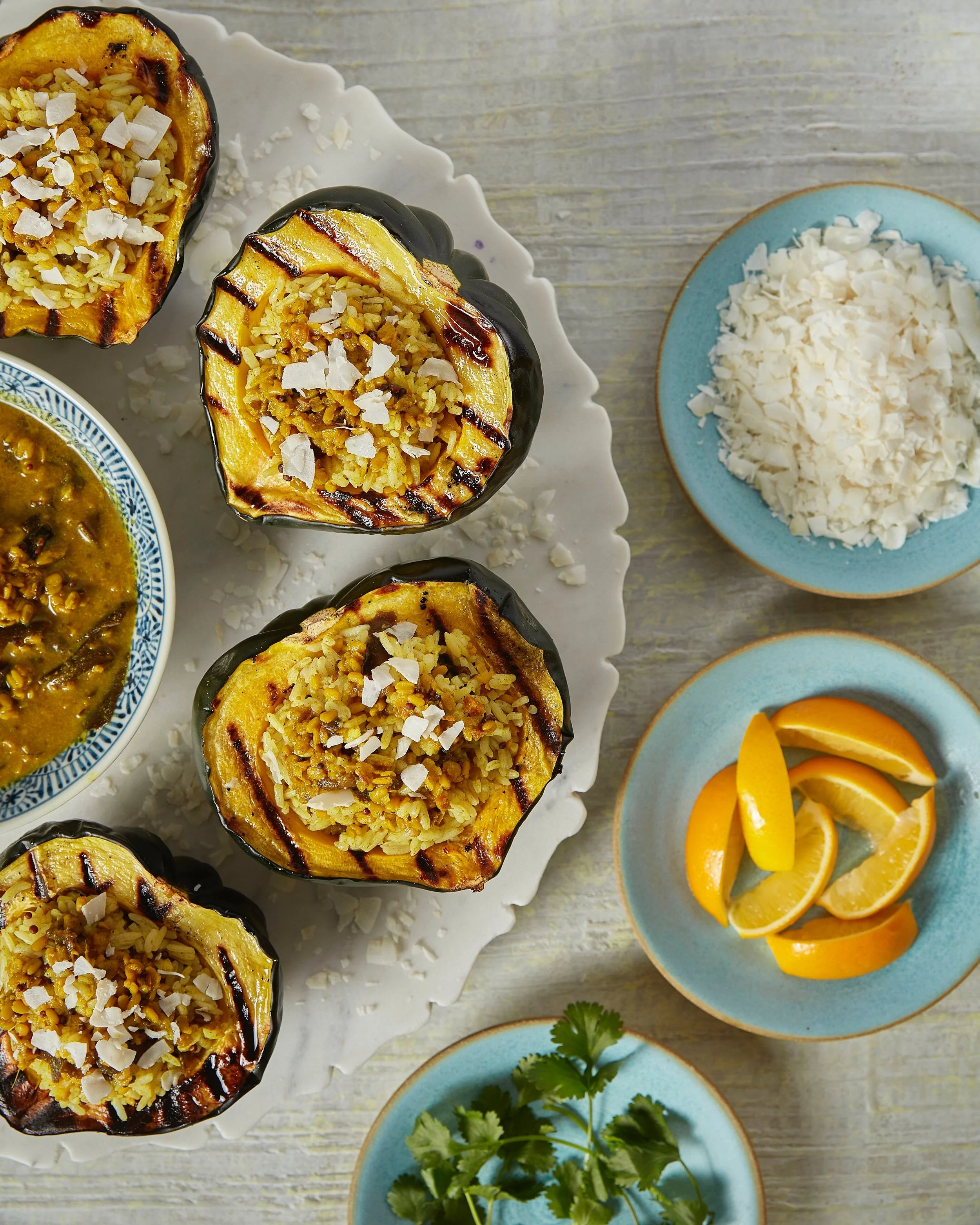Flipping the Script on Mexican Cuisine
Paloma’s Chef Nathan Mayes shares special dishes from his Winter 2022 menu, all of them made with layered flavors derived from exquisite ingredients, and plated with an artist’s eye. Here: Roasted Half Chicken with Local Root Vegetables & Mole Colorado. Photography by Tira Howard.
For many diners in the United States, Mexican food is no more than a repeating cycle of the usual over-sauced and under-seasoned suspects. Among a sea of strip-mall restaurants, frozen foods, and uninspired cooking shows, the complexity and beauty of Mexican cuisine may not be visible, or even available, to the casual weekday dinner crowd. With Chef Nathan Mayes at the helm, Paloma has been quietly flipping that script for eaters since its opening.
Left: There are house chips and salsa and then there are Paloma chips and salsa. Mark our words, these are a must-have aperitive with a mezcal cocktail. Reputations are built and lost on salsa, and you can bet the house with Paloma’s salsa morita, verde, roja, and pico de gallo.
Right: Blue Corn Tlayuda with Refritos, Roasted Mushrooms & Market Escabeche. Chef Nathan Maye’s take on the iconic Oaxacan dish starts with a lightly fried tortilla mounded with mouthwatering mushrooms and refritos and the vinegary spike of escabeche. A perfect choice to share over cocktails.
Mexico is comprised of 32 states, each with its variation and vocabulary of ingredients and traditional food preparation. The details of what’s available to us on this end of the border are often blurred at best under the broad strokes of fajita platters and Taco Tuesday specials. And so, it’s nice, refreshing, and important when chefs like Nathan dig into the valleys of lesser-known regional cuisines of Mexico and invest in detailed research and prep work for dishes that may have familiar names but are worlds apart from our experience.
Chef Nathan is not alone. Emiliano Marentes (El Paso), Rico Torres (San Antonio), and Marciela Vega (Atlanta) are just a few visionaries working to re-write the narrative of Mexican food, where provenance is central to understanding what we’ve been missing about Mexican food all along. Santa Fe’s Paloma Restaurant, consciously or not, is part of this cohort of food creatives disrupting definitions of what is and what is not Mexican food.
Left: Nixtamal Quesadillas with Field Greens, Quesillo & Almond Salsa. The vibrancy of fresh greens co-mingled with the enormous flavor profiles of the other ingredients of this dish makes for a playful and delicious vegetarian option.
Right: Roasted Half Chicken with Local Root Vegetables & Mole Colorado. Heartwarmingly perfect for a casual weeknight out or a special occasion. The textures, flavors, and slight heat make for a crowd favorite from Paloma’s Chef Nathan Mayes.
Originally from Austin, TX, Chef Nathan grew up in what he describes as a restaurant family, which is to say that he’s been around food his entire life. After stints around the culinary world, including matriculating into and dropping out of the Culinary Institute of America and spending time in various kitchens around Santa Fe, a call from a former colleague and fellow visionary, Marja Martin, pointed their sails to what would become Paloma. “It’s been and continues to be an incredible journey,” says Nathan. “We started with items that people were familiar with, but we wanted a fresher approach.”
That approach is founded on the heart and soul of Mexican food, corn, or, more specifically, masa, which Paloma prepares using the ancient technique of nixtamalization. The nixtamal process begins with imported heirloom corn from Mexico called Cónico Azul, which they steep with calcium hydroxide (food-grade lime) that breaks down the exterior of the kernel to unlock its nutritional values and expand its flavor profile. Once ground, the masa becomes tortillas, masa snacks, quesadillas, huaraches, sopes, and other delicious wonders such as a thickening agent for their Mole Amarillo served atop a roasted half chicken.
Left: Enfrijolada with Queso Fresco, Smoked Chicken & Grilled Green Onions. A classic Mexican dish similar to enchiladas but highlighting the deep affinities between pinto beans and corn tortillas––a fundamental flavor pairing. Chef Mayes shares the recipe with TABLE readers here!
Right: Guava Tart with Piñon Marzipan, White Chocolate, Guava Sorbet & Local Honey. Chef Jessica Brewer’s desserts cap off every meal at Paloma with flair. Chef Brewer shares her recipe for Guava Sorbet here!
“There’s something that’s simpler and cleaner about the corn,” says Nathan when I ask about the lack of flour in his menu. “It has its flavor, and even though the corn comes from central Mexico, it feels and tastes like Santa Fe.”
Paloma is as much a place to learn as it is about the pleasure of enjoying food and ruminating flavors with familiar names that offer new experiences. It doesn’t have to source its central ingredients from Mexico or purchase the best possible ingredients from local purveyors. Still, when you travel to Oaxaca and other culinary centers in Mexico as a staff if only to seek out experiences to emulate for guests in Santa Fe, there’s no easy way to explain any of its motivations. Take one bite and the food speaks what has been taking us so long to hear.
STORY BY Gabe Gomez / Styling by keith recker / PHOTOGRAPHY BY tira howard
From Paloma’s mixologist Andrea Duran:
Don’t miss a single delicious thing:
12 Month - 6 issue subscription















Indulge in the taste spring with this delicious Cherry Galette